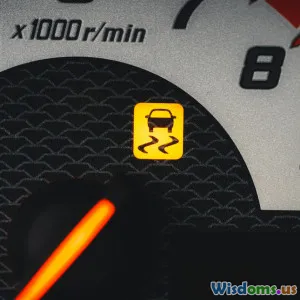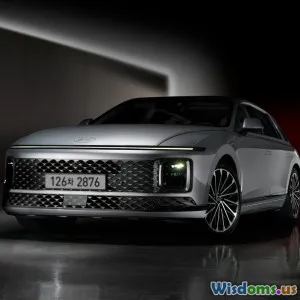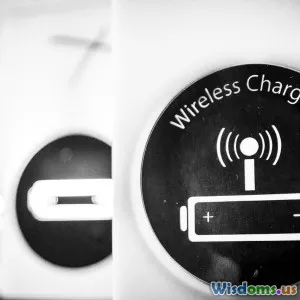
Do Millennials Ignore In Car Safety Alerts What Data Reveals and Why
8 min read Explore why millennials might ignore in-car safety alerts with data-backed insights and what this means for road safety. (0 Reviews)
Do Millennials Ignore In-Car Safety Alerts? What Data Reveals and Why
Introduction
In-car safety alerts are designed to keep drivers attentive and prevent accidents—but are all drivers equally receptive to these warnings? A growing body of research suggests that millennials, defined roughly as those born between 1981 and 1996, may be more likely than previous generations to ignore or overlook these crucial safety prompts. This behavior raises alarms about the effectiveness of modern vehicle warning systems and raises questions about how best to engage younger drivers.
Why is this happening? What does the data actually say about millennial drivers’ interaction with safety alerts? And most importantly, what can automakers and safety advocates do to improve outcomes? Let’s unravel the facts and explore the motivations behind this generational difference.
Understanding In-Car Safety Alerts: What Are We Talking About?
Modern vehicles come equipped with numerous alerts designed to keep drivers safe. These include:
- Auditory warnings: Beeping sounds signaling lane departure or collision risks.
- Visual alerts: Dashboard lights or heads-up displays highlighting hazards.
- Haptic feedback: Steering wheel or seat vibrations to alert inattentiveness.
According to the National Highway Traffic Safety Administration (NHTSA), such Advanced Driver Assistance Systems (ADAS) have been shown to reduce crash risks by up to 20%. However, the utility depends heavily on driver responsiveness.
What Does the Data Say About Millennial Engagement with Safety Alerts?
Research Findings
Recent studies highlight a notable trend: millennials are less likely to actively respond to in-car safety alerts. A 2023 survey by the Insurance Institute for Highway Safety (IIHS) found that 38% of millennial drivers admitted to ignoring lane departure warnings at least occasionally, compared to 22% of Gen X and 15% of baby boomers. Moreover, fatal crash data from the National Traffic Safety Board (NTSB) corresponds with these behavioral patterns, showing a higher incidence of crashes linked to distracted driving within the millennial cohort.
Possible Factors Identified by Researchers
- Alert fatigue: Increased exposure to countless notifications—from smartphones, smartwatches, and car systems—can desensitize drivers, causing them to tune out warnings.
- Distracted driving trends: Studies show millennials heavily rely on mobile apps and infotainment systems, which divide their attention.
- Skepticism toward automated tech: Paradoxically, while millennials are tech-savvy, some express distrust in automated alerts, questioning their accuracy or relevance.
Exploring the 'Why': Psychology and Lifestyle Influences
Familiarity Breeds Contempt
Many millennials grew up during the boom of digital technology, experiencing constant waves of information and notifications throughout their day. This frequent barrage can lead to what psychologists call "sensory overload," reducing the effectiveness of safety alerts. A driver inundated with alerts from multiple devices may develop a habit of ignoring or muting alerts to maintain focus—or simply out of frustration.
Cultural and Attitudinal Differences
Driving culture among millennials also differs from earlier generations. Many view driving as less central to their lifestyle, especially in urban environments with alternative transport options. This less frequent reliance can result in less attentiveness or investment in vehicle alerts.
Behavioral research shows millennials tend to value autonomy and may resent what they perceive as "nagging" warnings, reducing compliance. Additionally, a sense of overconfidence in their multitasking ability can lead to disregarding alerts.
The Influence of Infotainment Systems
Modern cars, especially models targeting younger buyers, often integrate sophisticated infotainment centers that allow social media, video streaming, and multiple app usage while driving. This creates competition for attention between entertainment and safety warnings, often with the latter losing out.
The Consequences: Why Ignoring Alerts Can Be Deadly
Ignoring or disabling in-car safety alerts carries severe risks. The IIHS estimates that ADAS-related solutions can prevent up to 50% of collisions involving lane departures and front-to-rear crashes. When alerts are disregarded, the potential for crash involvement spikes dramatically.
Recent incident analyses reveal that many millennial-involved crashes could have been mitigated by simple attention to safety warnings. In one notable 2022 study, researchers found that distracted drivers ignoring collision warnings were 1.8 times more likely to be involved in injury crashes.
Moreover, this trend has socioeconomic consequences. Increased collision rates mean higher insurance premiums and healthcare costs, all of which disproportionately affect younger drivers already facing financial challenges.
Toward Solutions: How to Engage Millennials Effectively
Addressing the issue calls for a multi-pronged approach.
Rethinking Alert Design for Reduced Fatigue
Automakers can redesign alerts to be more intuitive and less intrusive, striking a balance to avoid overwhelming drivers. Adaptive alert systems that recognize driver responsiveness and tailor warnings accordingly show promise.
Integration With Smartphones and Wearables
Seamless integration of safety warnings into devices that millennials already engage with—smartphones, smartwatches—can increase attention rates. For example, subtle haptic feedback on a smartwatch during a lane departure can direct focus without startling.
Educational Campaigns Leveraging Millennial Values
Government and private sector campaigns emphasizing autonomy, responsibility, and the social benefits of safe driving resonate well with this group. Messaging that frames adherence to safety alerts as empowering rather than restrictive is crucial.
Encouraging Behavioral Adaptation Through Incentives
Insurance companies increasingly use telematics to reward safe driving behaviors, including alert compliance. Millennials who respond to alerts and exhibit attentive driving can qualify for reduced premiums and perks.
Conclusion
The data clearly indicates a marked generational difference in responding to in-car safety alerts, with millennials exhibiting higher rates of disregard. This behavior is shaped by the digital information environment, cultural attitudes, and competing distractions within modern vehicles.
Yet, understanding these trends provides a pathway toward smarter system design, targeted education, and behavioral incentives—ultimately enhancing road safety for all. With collaboration among automakers, regulators, and millennials themselves, it's possible to transform in-car safety alerts from background noise into lifesaving tools.
Innovative approaches can make these alerts more engaging and meaningful for millennials, ensuring technology fulfills its promise to protect lives.
Author's Note: Given the current pace of vehicle technology and cultural shifts, continued research is essential. This overview reflects data and trends up to early 2024.
Rate the Post
User Reviews
Popular Posts

















